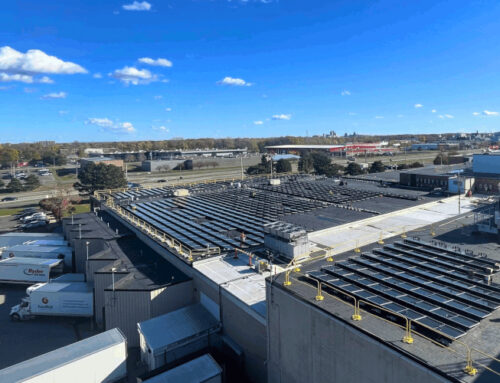UAE Embedded Finance Market Investment Outlook 2025-2030: Banks in UAE Accelerate Embedded
November 18, 2025
This is a paid press release. Contact the press release distributor directly with any inquiries.
The embedded finance market in the UAE offers opportunities across multiple sectors driven by bank API modernization, fintech adoption, and regulatory backing. Growth areas include integrated financial services for e-commerce, public utilities, and SMEs, as well as BNPL models. Competitive intensity arises from banks, fintechs, and platform companies adapting to user-centric, compliant, and scalable solutions.
Emirati Embedded Finance Market
Dublin, Nov. 18, 2025 (GLOBE NEWSWIRE) — The “United Arab Emirates Embedded Finance Market Size & Forecast by Value and Volume Across 100+ KPIs by Business Models, Distribution Models, End-Use Sectors, and Key Verticals (Payments, Lending, Insurance, Banking, Wealth) – Databook Q4 2025 Update” has been added to ResearchAndMarkets.com’s offering.
The embedded finance market in the United Arab Emirates (UAE) is on a robust growth trajectory, expected to expand by 10.4% annually to reach US$6.27 billion by 2025. From 2021-2025, the market achieved a CAGR of 14.9%, with projections maintaining a 7.5% growth rate annually from 2026 to 2030. By 2030, the market is forecasted to grow from US$5.68 billion in 2024 to approximately US$8.38 billion.
This comprehensive report offers detailed insights into the UAE’s embedded finance market, covering payments, lending, insurance, banking, and investments. It includes extensive KPI coverage and granularity across business models, distribution models, and end-use sectors, making it an invaluable resource for understanding market dynamics and competitive positioning in the rapidly evolving landscape.
Key Trends and Drivers Shaping Embedded Finance in the UAE
The UAE’s embedded finance landscape is influenced by bank-led API modernization, non-fintech platform adoption, BNPL scaling, and public sector involvement. Regulatory support, digital-savvy populations, and infrastructure investments like FIT and UAE PASS are propelling growth. Over the next few years, expect a shift from product-centric to infrastructure-native financial services across public utilities, e-commerce, and SME platforms, emphasizing operational scale and interoperability.
Financial Institutions Accelerating Embedded Finance Integration
-
Traditional banks and financial institutions are embedding products such as payments, BNPL, insurance, and SME lending into wider digital ecosystems. First Abu Dhabi Bank (FAB) collaborates with Tabby for real-time embedded credit services at checkouts. Emirates NBD introduces “Business Banking Plus” to provide SMEs with embedded services via ecosystems like Zoho and SAP.
-
The UAE’s fintech-friendly policies, supported by open banking frameworks, push banks toward API-driven integrations, catering especially to digitally native SMEs and expatriates. There is a notable push for BaaS (Banking-as-a-Service) capabilities via third-party platforms.
-
Banks are investing in developer portals and real-time API frameworks, adapting to the rise of digital banks like Zand and Wio that rely on embedded-native stacks.
Non-Fintech Platforms Embedding Finance for Enhanced Engagement
-
Platforms like Noon and Careem are embedding BNPL and other financial tools into user flows to boost engagement and reduce churn. Regulatory approvals such as digital wallet licenses support this trend.
-
With a focus on enhancing ecosystems, non-fintech sectors like hospitality, real estate, and logistics are expected to adopt embedded finance rapidly.
Expansion of Embedded BNPL Models
-
BNPL is thriving across fashion, electronics, and travel, with players like Tabby and Tamara integrated into major platforms. Government initiatives like DubaiNow explore BNPL for bill payments.
-
High smartphone penetration and cultural acceptance of installment-based purchases facilitate BNPL growth, with increased regulatory oversight anticipated.
Government Initiatives Enabling Embedded Finance Infrastructure
-
The UAE’s government platforms like DubaiNow are integrating a wide range of services, from payments to insurance. Programs like the Central Bank’s FIT are crucial for open API and instant payment rails development.
-
The digital-by-default policy and Vision 2031 agenda, focusing on digital economy expansion, are key to future growth.
Competitive Landscape and Regulatory Evolution
The UAE’s embedded finance landscape features strong competition among banks, fintechs, and digital platforms. Sectoral specialization and partnerships are vital. Regulatory licensing evolves to ensure competitiveness while controlling financial risks, with specialized licenses like the SVF and Digital Payment Token Services licenses emerging.
Key Attributes
|
Report Attribute |
Details |
|
No. of Pages |
230 |
|
Forecast Period |
2026-2030 |
|
Estimated Market Value (USD) in 2026 |
$6.27 Billion |
|
Forecasted Market Value (USD) by 2030 |
$8.38 Billion |
|
Compound Annual Growth Rate |
7.5% |
|
Regions Covered |
United Arab Emirates |
For more information about this report visit https://www.researchandmarkets.com/r/yh9usz
About ResearchAndMarkets.com
ResearchAndMarkets.com is the world’s leading source for international market research reports and market data. We provide you with the latest data on international and regional markets, key industries, the top companies, new products and the latest trends.
Attachment
CONTACT: CONTACT: ResearchAndMarkets.com Laura Wood,Senior Press Manager press@researchandmarkets.com For E.S.T Office Hours Call 1-917-300-0470 For U.S./ CAN Toll Free Call 1-800-526-8630 For GMT Office Hours Call +353-1-416-8900
Terms and Privacy Policy
Related Post




